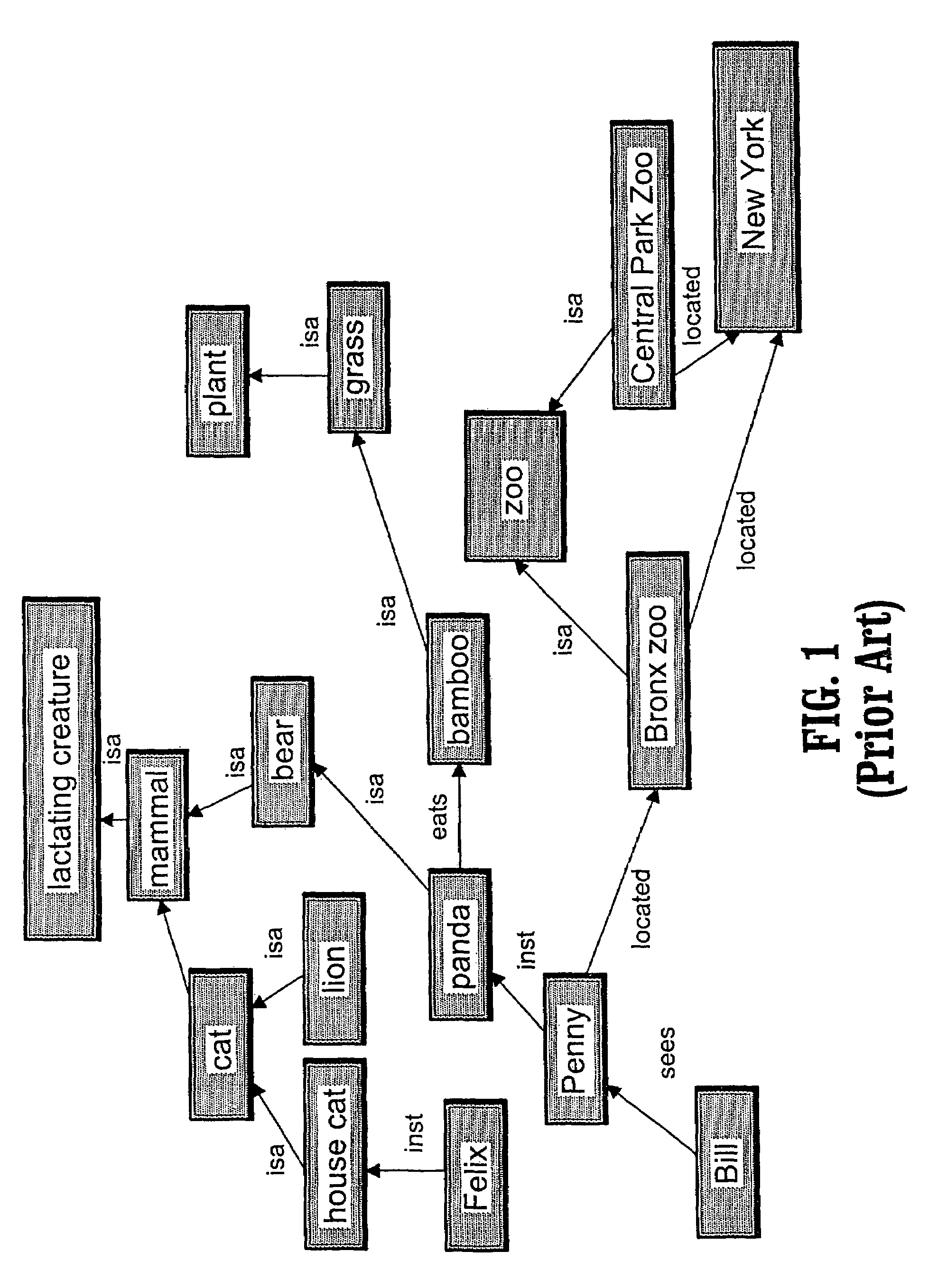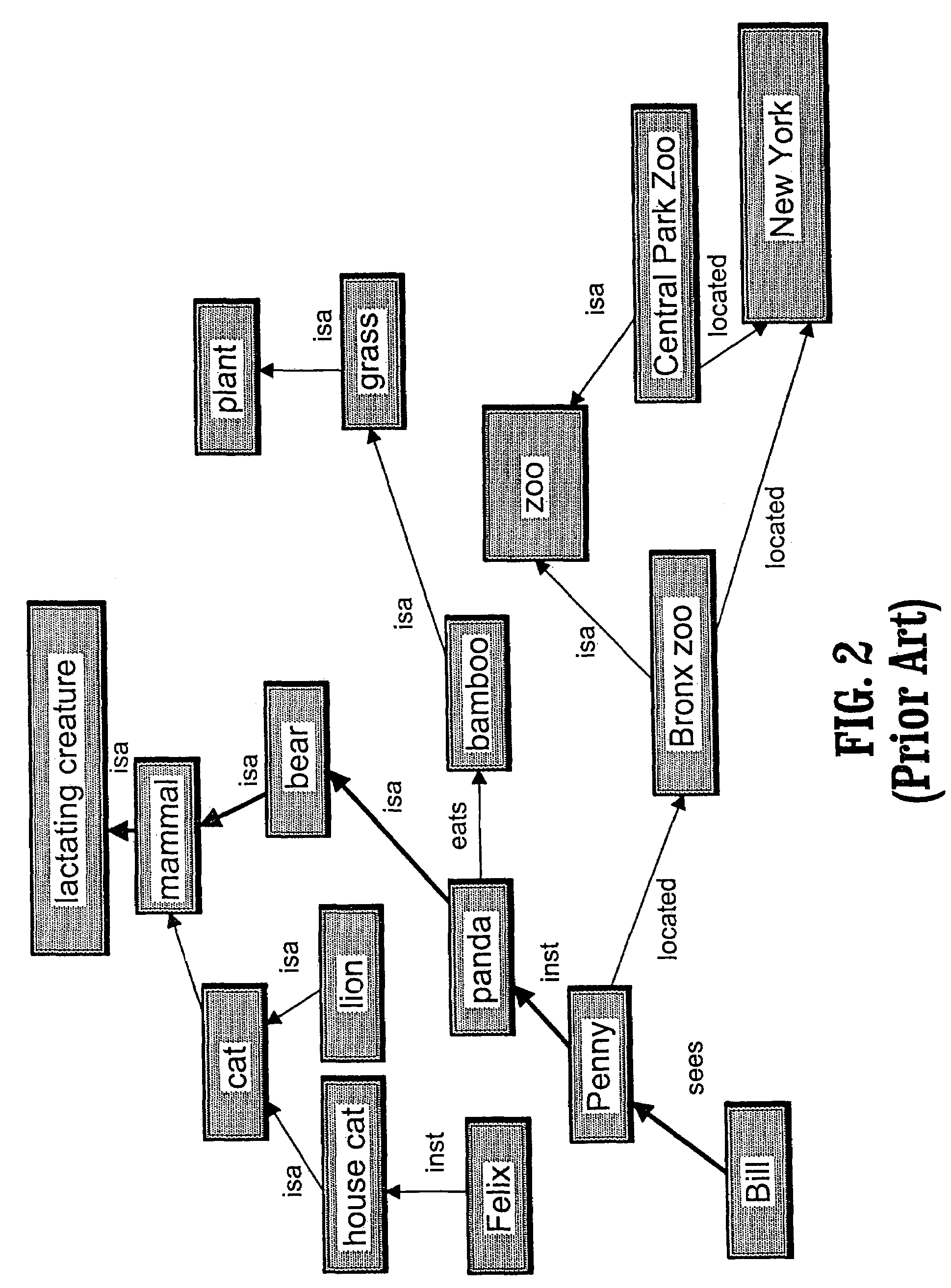Method and knowledge structures for reasoning about concepts, relations, and rules
a knowledge structure and concept technology, applied in the field of method and knowledge structure for reasoning about concepts, relations, rules, can solve the problems of not allowing general reasoning, semantic networks still allow only very limited reasoning, and one can easily misuse semantic networks to make invalid conclusions while reasoning
- Summary
- Abstract
- Description
- Claims
- Application Information
AI Technical Summary
Benefits of technology
Problems solved by technology
Method used
Image
Examples
Embodiment Construction
[0093]FIGS. 1 through 4 are illustrative of the prior art and were discussed in detail above. Embodiments of the present invention are now described in detail with reference to FIGS. 5 through 41.
[0094]FIG. 5 is a block diagram that illustrates a computer processing system (5000) to which the present invention may be applied according to an embodiment of the present invention. The system comprises an enhanced semantic network system (5100). This instantiation of the enhanced semantic network system is used for reasoning about needs, products and situations; in general, enhanced semantic network systems can be used to reason about general concepts, relations, and rules. This enhanced semantic network system (5100) runs on a server (5200). The server (5200) is coupled to multiple clients or customers (5400) across a network (5500). The multiple customers (5400) make requests (5600) to the server (5200) and the server (5200) responds to requests (5600) by sending a response (5700) for ...
PUM
 Login to View More
Login to View More Abstract
Description
Claims
Application Information
 Login to View More
Login to View More - R&D
- Intellectual Property
- Life Sciences
- Materials
- Tech Scout
- Unparalleled Data Quality
- Higher Quality Content
- 60% Fewer Hallucinations
Browse by: Latest US Patents, China's latest patents, Technical Efficacy Thesaurus, Application Domain, Technology Topic, Popular Technical Reports.
© 2025 PatSnap. All rights reserved.Legal|Privacy policy|Modern Slavery Act Transparency Statement|Sitemap|About US| Contact US: help@patsnap.com



